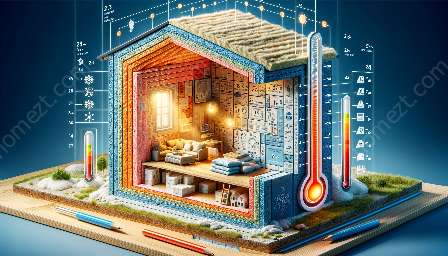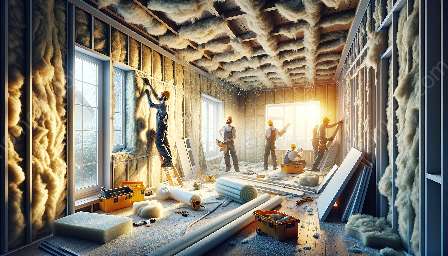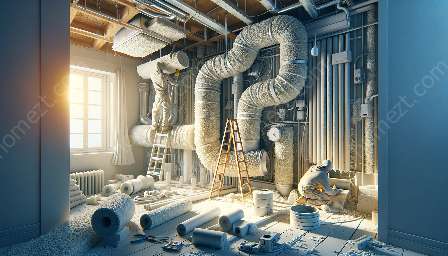Insulating walls and ceilings is a vital component of home improvement that can significantly impact energy efficiency, comfort, and cost savings. By properly insulating your home, you can reduce energy consumption, minimize temperature fluctuations, and create a more comfortable living environment. In this guide, we'll explore the importance of insulation, different types of insulation materials, and the essential steps involved in insulating walls and ceilings. Whether you're a homeowner looking to enhance your property's energy efficiency or a DIY enthusiast eager to tackle a new project, this comprehensive resource will provide you with the knowledge and tips you need to insulate your walls and ceilings effectively.
The Importance of Insulation
Insulation plays a crucial role in maintaining a comfortable and energy-efficient home. It acts as a barrier to heat flow, reducing the amount of heat that is transferred through your walls, ceilings, and floors. This helps to maintain consistent indoor temperatures, reduce energy consumption, and lower utility costs. Proper insulation also contributes to soundproofing, preventing outside noise from penetrating your home and creating a quieter living environment. By understanding the significance of insulation, you can make informed decisions about improving your home's energy efficiency and comfort.
Types of Insulation Materials
There are various insulation materials available, each with its own characteristics and benefits. Understanding the different types of insulation can help you choose the most suitable option for your walls and ceilings. Common insulation materials include:
- Fiberglass Insulation: Fiberglass is a popular choice for insulating walls and ceilings. It is composed of fine glass fibers and is available in batts, rolls, or loose-fill forms. Fiberglass insulation is known for its affordability, fire resistance, and ease of installation.
- Cellulose Insulation: Made from recycled paper products treated with flame retardants, cellulose insulation is an environmentally friendly option. It can be blown into wall cavities and attics, effectively filling gaps and providing excellent thermal performance.
- Spray Foam Insulation: Spray foam insulation expands upon application, filling crevices and voids to create a seamless barrier against heat transfer. It offers high R-values, superior air sealing, and moisture resistance, making it a versatile choice for insulating walls and ceilings.
- Rigid Foam Insulation: Rigid foam boards are lightweight, durable, and offer high insulating properties. They can be installed on interior and exterior walls, providing effective thermal resistance and moisture control.
It's essential to consider factors such as R-value, fire resistance, moisture resistance, and installation method when selecting the appropriate insulation material for your walls and ceilings. Consulting with insulation professionals can help you make informed decisions based on your specific needs and budget.
Insulating Walls and Ceilings: Essential Steps
Insulating walls and ceilings requires careful planning, preparation, and execution to ensure optimal results. Here are the essential steps involved in the insulation process:
- Assessing Insulation Needs: Start by evaluating the existing insulation in your walls and ceilings. Determine if additional insulation is required to improve energy efficiency and address any comfort issues.
- Choosing the Right Insulation: Select the insulation material that best suits your home's requirements. Consider factors such as thermal performance, moisture control, and compatibility with existing structures.
- Preparing the Work Area: Clear the work area of any obstructions and ensure that the walls and ceilings are clean, dry, and free of potential contaminants.
- Installing Insulation: Follow manufacturer's guidelines and best practices for installing insulation. Pay close attention to sealing air leaks, filling gaps, and maintaining consistent coverage throughout the designated areas.
- Sealing and Protecting: Once the insulation is in place, seal any gaps and penetrations to minimize air leakage and ensure the integrity of the insulation layer. Consider using vapor barriers and protective coverings as needed.
- Quality Assurance: Verify that the insulation has been installed correctly and thoroughly inspect the work to identify any areas that may require additional attention.
- Monitoring and Maintenance: Keep track of your home's energy usage and indoor comfort levels after insulating walls and ceilings. Address any issues promptly and perform routine maintenance to preserve the effectiveness of the insulation over time.
Conclusion
Insulating walls and ceilings is a fundamental aspect of home improvement that can enhance energy efficiency, comfort, and overall livability. By understanding the importance of insulation, exploring different types of insulation materials, and following essential steps for the insulation process, you can create a more energy-efficient, comfortable, and sustainable living space. Whether you're aiming to reduce energy costs, minimize sound transmission, or increase the resale value of your home, investing in quality insulation for your walls and ceilings can yield long-term benefits and contribute to a more sustainable future.





















